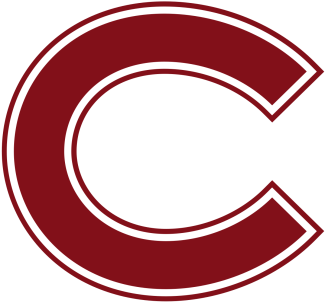The Cavaliers, with an offense coached by former Tufts assistant Sean Kirwan, who followed Tiffany from Brown to UVA, averaged 14.4 goals (fourth-highest in Division I as of May 1).
The Cavs produced three all-conference players in sophomore midfielder Ryan Conrad, senior attackman Zed Williams and freshman attackman Michael Kraus — the league’s Rookie of the Year — yet failed to qualify for last month’s Atlantic Coast Conference tournament.
UVA also failed once again to beat an ACC team in the regular season. Virginia is an astonishing 1-19 in its last 20 games against the ACC.
A porous defense and an inconsistent showing by its faceoff unit summed up Virginia’s plight in 2017. The Cavs, who spent the entire season near the bottom of Division I in scoring defense, wound up ranked 65th out of 69 schools after allowing an average of 13.27 goals per game.
Statistically, Brown’s regular season looked a lot like Virginia’s. The Bears rank third in the nation with a scoring average of 14.43 goals and are 62nd in scoring defense (12.93 GAA). The average of shots taken by Virginia (46.3 per game) and Brown (45.7) is nearly identical.
But clearly, over the second half of Brown’s season, which included a schedule more favorable than any member of the ACC — expected to send four teams to the NCAA tournament — the Bears tightened up enough on offense and defense to position themselves to win the Ivy title and gain that league’s only expected invitation to the dance.
“We committed to this style of play the first day we came together as a staff. We know we’re never going to win that [scoring defense] category,” Tiffany said. “But in the end, our defense was too fragile, we played an excessive amount of it, and we wore down. That’s one of the potential pitfalls of our style.”
“We still don’t want to get away from playing as fast as we can and generating as much offense as we can. We weren’t as good off the ground [in transition] as we needed to be this year,” he added. “There’s no question we have to better on defense, in our man-to-man and with our help. But this [kind of offense] is what we believe in, and we really wanted to install that this year.”
Tiffany lamented Virginia’s 3-4 record in one-goal games. The Cavs dropped one-goal decisions to Syracuse (14-13), Notre Dame (11-10 in OT), Johns Hopkins (18-17) and Penn, which ended up sweeping a nonc-onference series from UVA, first with an 11-10 win on Feb. 25, then with a 17-11 thumping in the ACC Showcase game in Durham on Saturday.
Virginia’s frustration in large part can be traced to its failure to support an offensive approach designed to generate and tolerate turnovers. UVA is tied for 55th with 15.13 turnovers per game, while Brown ranks 66th with 16.93 miscues per contests.
In the specialty areas of facing off and goaltending, Brown has gotten it done more proficiently this year. A year after losing the game’s best specialty combination to graduation — first-team All-American goalie Jack Kelly and second-team All-American faceoff man Will Gural — the Bears have held up in 2017.
Led by junior Ted Ottens (64.7 faceoff win percentage) the Bears have won a solid 61 percent of their draws, sixth in Division I. Freshman goalie Phil Goss ranks a middling 37th in save percentage (51.2).
But Goss, who, like Virginia’s goalie tandem of junior Will Railey and freshman Griffin Thompson, regularly saw more than 40 shots per game, is tied for fourth in Division I with 12.43 saves per game.
Among his finer efforts was the 19-save gem that proved to be the difference in an 11-8 win over Penn on April 8. That victory sparked Brown, which has won five of its last six games.
Virginia’s showing at the faceoff dot and between the pipes was less reliable. The Cavs leaned on the faceoff combination of freshman Luke Brugel and redshirt junior Jason Murphy and won a respectable 52.7 percent of their attempts.
UVA was unsettled in the cage in 2017. Matt Barrett, the incumbent starter, was arrested for drug possession over the summer and suspended indefinitely from the team. Near midseason, Thompson relieved Railey as the starter. Both keepers struggled with consistency in stopping shots behind a unit that was unsteady throughout the year — maybe never more so than on March 25. That day at Homewood Field, Hopkins outscored the Cavs 9-3 to turn a 14-9 fourth-quarter deficit into an 18-17 victory in overtime.
Railey finished the year by allowing 13.42 goals per game and saving 43.4 percent of the shots he faced. Thompson (12.89 GAA, 48.8) fared better, but not enough to get Virginia into the postseason.




















